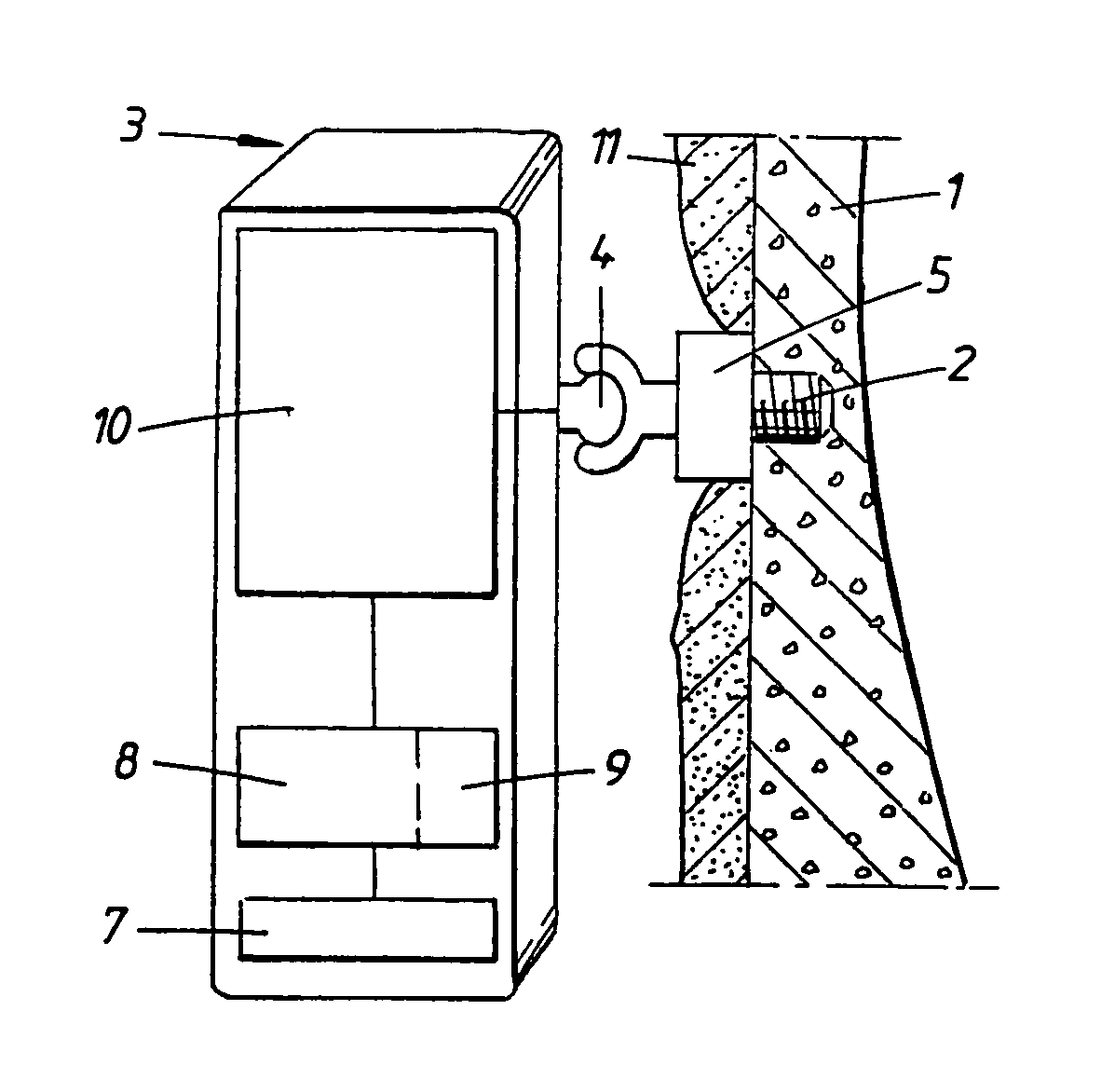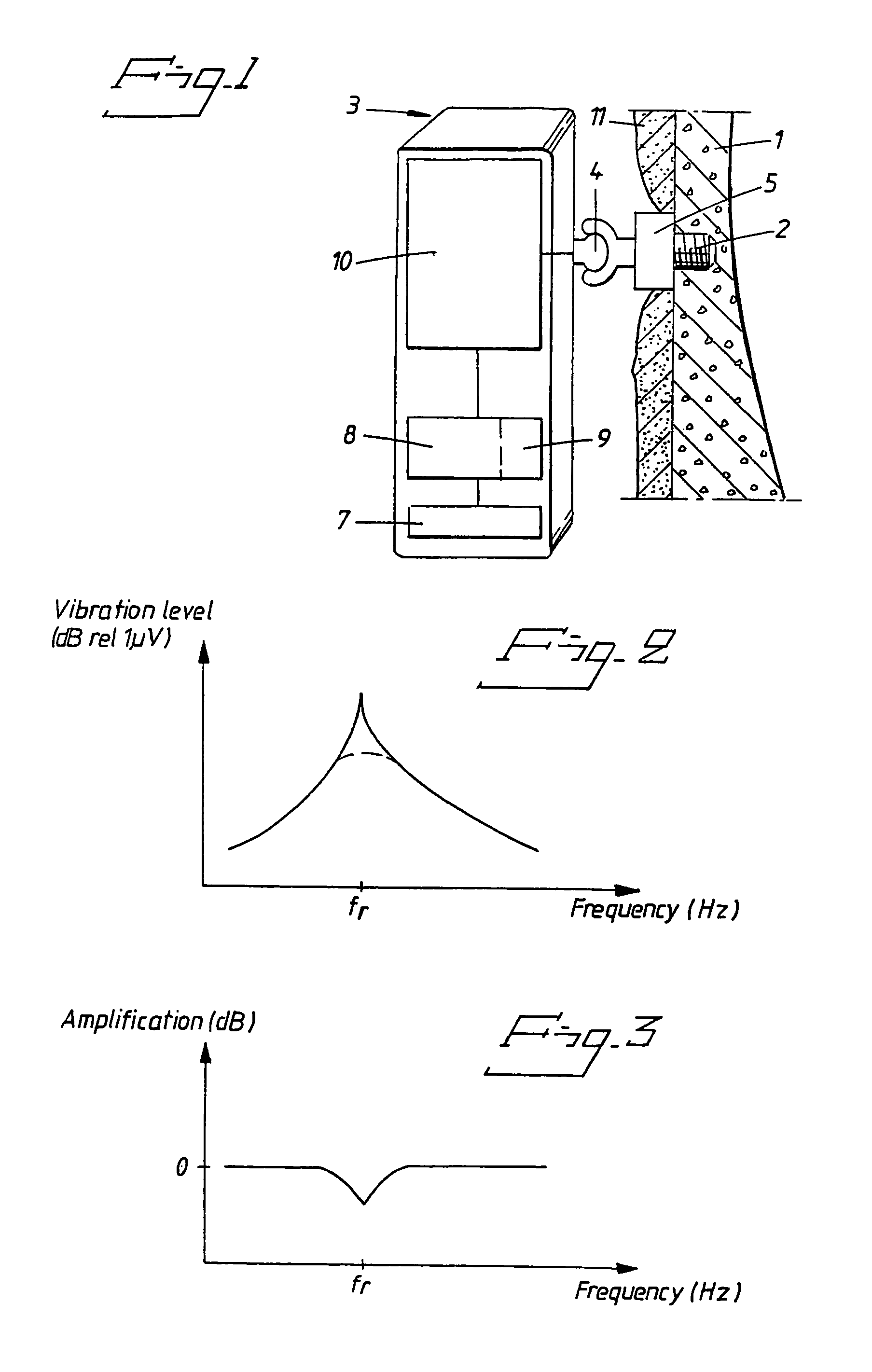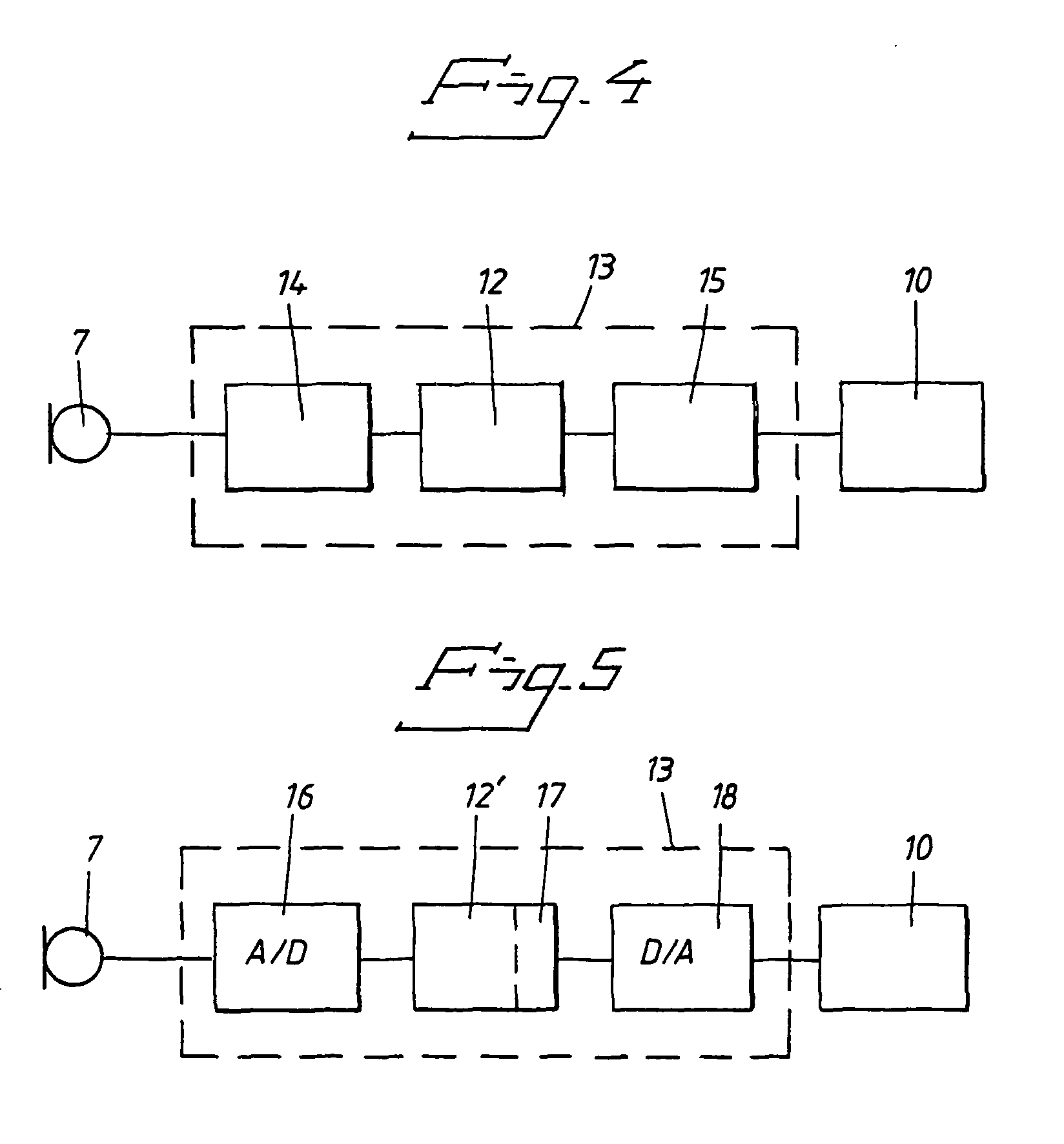Method and an arrangement for damping a resonance frequency
- Summary
- Abstract
- Description
- Claims
- Application Information
AI Technical Summary
Benefits of technology
Problems solved by technology
Method used
Image
Examples
Embodiment Construction
[0026]FIG. 1 illustrates the general principle for a bone-anchored hearing aid apparatus. The hearing aid apparatus is anchored directly into the skull bone, preferably into the mastoid bone 1 behind the outer ear, by means of a titanium fixture 2, for instance a titanium fixture of the type which is described in SE 002627-8. The figure shows the two main parts of the hearing aid apparatus, i e the bone anchored part and the hearing aid part 3 which is connected to the bone anchored part by means of a coupling arrangement, such as a bayonet coupling or any other type of coupling 4 based on mechanically spring member parts. The bone-anchored hearing aid part comprises, in addition to the titanium fixture, a spacer element or skin penetrating member 5 which is connected to the bone anchored titanium fixture by means of a spacer screw. The fixture is preferably made of titanium as titanium has the ability to be integrated into the surrounding bone tissue, so-called osseointegration. Th...
PUM
 Login to View More
Login to View More Abstract
Description
Claims
Application Information
 Login to View More
Login to View More - R&D
- Intellectual Property
- Life Sciences
- Materials
- Tech Scout
- Unparalleled Data Quality
- Higher Quality Content
- 60% Fewer Hallucinations
Browse by: Latest US Patents, China's latest patents, Technical Efficacy Thesaurus, Application Domain, Technology Topic, Popular Technical Reports.
© 2025 PatSnap. All rights reserved.Legal|Privacy policy|Modern Slavery Act Transparency Statement|Sitemap|About US| Contact US: help@patsnap.com



